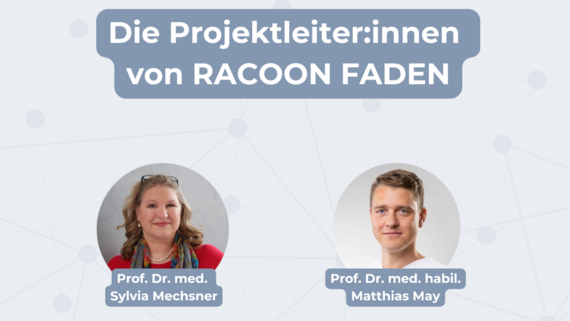8 March is International Women's Day. To mark the occasion, the project leaders of the NUM research project RACOON FADEN, Prof Dr Sylvia Mechsner (Charité - Universitätsmedizin Berlin) and Prof Dr Matthias May (Academic Medical Center Erlangen), answer three questions about their project. RACOON FADEN is doing pioneering work in the early detection of Adenomyosis, a type of precursor to endometriosis. Around 10 percent of all women of childbearing age suffer from endometriosis.
What is the aim of the project?
Endometriosis is usually only diagnosed after 8-10 years. That is too long a time. Those affected usually have symptoms long before this, especially severe menstrual pain. These symptoms usually begin in adolescence. The cause of the severe menstrual pain is the uterus, in which a type of precursor of endometriosis, known as adenomyosis, spreads. Later on, this is almost always associated with endometriosis outside the uterus. Until now, too little attention has been paid to adenomyosis in the disease process. When we see it on ultrasound, the processes are usually already advanced and no longer regress. Therefore, the aim of our study is to find early signs of adenomyosis. To do this, we use Magnetic resonance imaging (MRI), which allows us to take very detailed non-invasive images and tissue analyses of the uterus.
What significance does it have for affected patients?
We want to learn more about the structure and changes in the uterus. By organising the study into a study group with symptomatic patients and a control group with asymptomatic test subjects, it will be possible to identify characteristics that are associated with an early form of endometriosis. As we examine each participant at two fixed points in the menstrual cycle, we also obtain information about the changes in the uterus in different hormonal phases. The findings of the study will enable us to analyse patients with severe menstrual-related symptoms at an early stage in future and take therapeutic measures to prevent the disease from progressing. We also want to use Artificial Intelligence to develop an automated uterine analysis and make it available for follow-up studies.
What has already been achieved?
We have been able to establish a network of 14 certified endometriosis centers in the Network of University Medicine (NUM), which uses the Radiological Cooperative Network (RACOON) and the NUM Clinical Epidemiology and Study Platform (NUKLEUS) for data collection. A standardised multi-parametric MRI examination protocol was successfully set up at all sites. Around half of the required participants have already been recruited to take part in the study. Almost a third of the MRI examinations have so far been carried out successfully and without complications. Initial analyses indicate that the shape and wall structure of the uterus is highly variable. This applies between the patients and test subjects, but also between the cycle times, between the individual images during an examination appointment and sometimes even during the acquisition of a single series of images.



